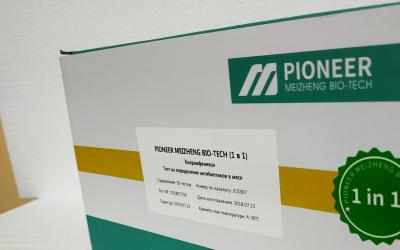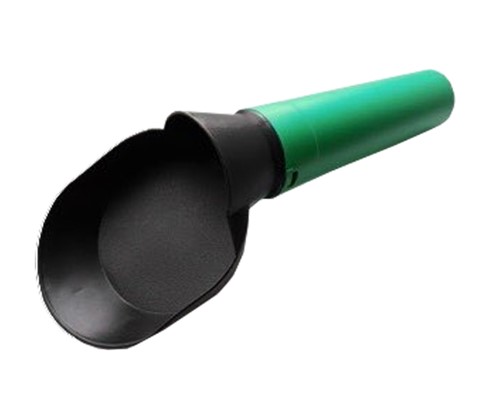Authorities propose removing the road to the south project from the Russian Railways investment program

The government proposed to exclude from the long-term investment program of JSC Russian Railways the project to organize high-speed passenger traffic in the direction "Center - South" worth 1.3 trillion rubles due to insufficient funding. This proposal was made in April by the DIRECTOR of the government's transport department Anatoly Meshcheryakov during a meeting with Igor Levitin, who then held the post of presidential aide (since May - presidential adviser and special representative of the Russian president for international cooperation in the field of transport).
The minutes of the meeting are at the disposal of RBC; its authenticity was confirmed by a source familiar with the contents.
What project are we talking about?The Center-South project, which later became known as the Southern Cluster, envisaged the construction of a railway line from Moscow to the Black Sea resorts, moving the road from the sea to the mountains. This was supposed to increase passenger traffic between Sochi and Gelendzhik, as well as reduce the train travel time from Moscow to Sochi to 16 hours. In 2020, the project was estimated at 1.37 trillion rubles, 330 billion of which were to be allocated from the National Welfare Fund, the remaining 1.04 trillion rubles would come from Russian Railways investments . The calculation was presented by the Ministry of Transport on behalf of President Vladimir Putin.
Back in 2019, Putin noted that 4 to 5 million people arrive in Gelendzhik during the summer, some of whom would "gladly" go to Sochi. But because of the difficult road, many do not dare to travel along it. In addition, the president said that every year Russian Railways has to repair the branch near the sea, since it "eats up" part of the coast. At the end of April 2024 , the president again instructed to work out a project based on the results of a meeting on the development of southern RUSSIA and the Azov region, held on March 6. A report on the work carried out was to be submitted by June 15.
What will be the alternative?According to an RBC source familiar with the discussion of the project, the real reason for excluding Center-South from the Russian Railways investment program is related to the priority given to the South HSR. Details of the South route project, in particular, were presented at the 2024 St. Petersburg International Economic Forum: the length of the route from Moscow to Adler will be 1.54 thousand km, trains will reach speeds of up to 400 km/h, which will allow travel to the Black Sea resorts in 7 hours and 50 minutes. Passenger traffic on the HSR is expected to be at the level of 17.2 million passengers annually, while the current figure is estimated at 7.4 million people.
The source explains the essence of the priority as follows: "The Center-South project was developed more than five years ago and envisaged a real travel time of about 16 hours." "At the same time, the South high-speed rail line will allow you to get from Moscow to Adler in about eight hours," the source notes. There is no final calculation of the cost of the South yet, he adds, the project is still being developed.
The program for organizing high-speed and high-speed rail service in Russia for the period up to 2030 was developed in 2011, recalls another RBC source, also familiar with the discussion of these projects. All these lines were planned as high-speed railways, implying the movement of trains at a speed of 350 km/h. “Then Crimea happened, then covid-19 — and the plans for the high-speed railway began to be revised in favor of cheaper options. The high-speed railway project to Adler was reconfigured as the Center-South high-speed railway project. So it migrated from one program document to another,” the source explained.
Later, the Southern Cluster project “emerged”, the most expensive stage of which is the construction of a new railway line Krivenkovskaya - Sochi (inland) worth about 1 trillion rubles, which is more than half the cost of the entire Moscow - St. Petersburg high-speed railway. “In addition, the mountainous terrain will never allow speeds of up to 350 km / h to be reached. Despite the fact that the project was included in all strategic documents, it was not seriously considered,” the RBC interlocutor continues. It “wandered” until Putin ordered the development of projects for the construction of four high-speed railways - to St. Petersburg , Adler, Yekaterinburg and MINSK . As of June 2024, the economics have been “realistically” calculated for each of them, except for the last one, the source clarifies.
"And since we now have new territories (DPR, LPR), we also need to make branches from the high-speed railway to them. There are no plans for the high-speed railway to enter these cities directly, but the overall demand is growing, high-speed traffic is needed on the entire southern section. At the same time, only the pilot project, the Moscow-St. Petersburg high-speed railway, has been budgeted for now," he sums up.
How to organize tourist flow in the "South"According to Pavel Ivankin, President of the Scientific Research Center for Transportation and Infrastructure, it is too early to talk about the South High-Speed Railway as an immediate project — it has not been calculated globally. As for the Moscow -St. Petersburg direction, as the RBC interlocutor reminds us, there is cost estimates, design and survey work has been carried out: it is clear where land surveying is required, how many tracks are needed, and so on, that is, the project is ready for implementation. “Center-South” is a “verbal intervention,” he adds.
In order to mitigate the difficulties that currently exist on the North Caucasus Railway, a program for separating passenger and freight traffic should be adopted now - this will speed up passenger trains traveling in the southern direction, Ivankin believes. "This should be done in the near future, determine the directions, single them out, determine a program for increasing speeds - this could be 160 km/h, 180 km/h, 200 km/h, and so on. Accordingly, within this framework, the cost of the project should be calculated, and in the next 3-5 years, it should be possible to implement it. First of all, it is necessary to increase the speed on the Moscow-Krasnodar route. Within the framework of the HSR "South", this could look very good," he believes.
The expert also believes that the project should be implemented in conjunction with the program to expand the capacity of approaches to the ports of the Azov-Black Sea basin to 152 million tons by 2030.
The order to reduce travel time from Moscow to the Black Sea resorts to 16 hours leads to a reduction in carrying and throughput capacity, notes Kirill Yankov, Chairman of the Union of Passengers. "Trains will travel the entire way at a speed of 160 km/h to get there in 16 hours, but there will be far fewer of them," he explains. The maximum carrying and throughput capacity of the railway line is possible with the same train speed at 80-100 km/h.
"Now we have to choose: either speed up or ensure maximum capacity. In general, I don't think the high-speed rail line to the south is very effective, because, as experience shows, with a travel time of up to 5-6 hours, the train wins over the plane, and if it's longer (and it's at least 7-8 hours to Sochi), then it loses," says Yankov. The best solution now, when it's difficult to freely buy tickets to the south, would be not to speed up the line, but to ensure the maximum number of trains on it.
A representative of the Ministry of Transport forwarded RBC's request to Russian Railways. The Russian Railways press service declined to comment. RBC sent requests to the government and Levitin's office.
Read together with it:
- Конфликт между «Автотехцентром» и «Токаревской птицефабрикой»: иск на 18,7 млн рублей«Автотехцентр» был зарегистрирован в феврале 2018 года и занимается техническим обслуживанием и ремонтом автотранспортных средств. Генеральным директором компании является Антон Аминов. В 2024 году её выручка составила 833 млн рублей, а чистая прибыль — 7,7 млн рублей. Ранее другая тамбовская компания, ООО «Ника», подала иск к «Токаревской птицефабрике» с требованием вернуть задолженность по догов...
- На миллион меньше: Аргентина завершит 2025 год с сокращением поголовья крупного рогатого скота третий год подряд«Зимой (с июня по август) наблюдалась сложная ситуация в животноводстве, характеризующаяся разрозненными колебаниями цен на скот и экономической обстановкой, характеризующейся коррекцией обменного курса, ростом финансовых затрат и наличием больших площадей для выпаса скота с избытком воды», — отмечается в отчете. По частным оценкам и официальным данным, к концу 2......





























































